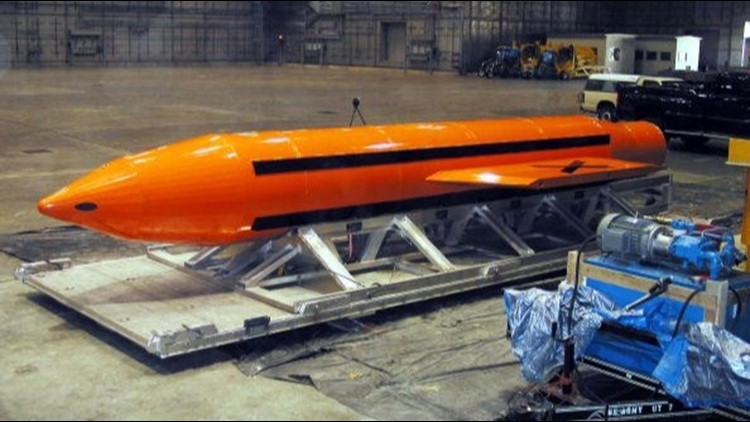The U.S. military for the first time Thursday dropped one of its largest conventional weapons — a massive 21,000-pound bomb nicknamed the "Mother of All Bombs" — on an Islamic State tunnel complex in Afghanistan.
The GBU-43, or massive ordnance air blast weapon, was dropped from a U.S. aircraft in Nangahar province, where U.S.-backed Afghan forces are battling the Islamic State, also known as ISIS.
President Trump has pledged to ramp up the pressure on ISIS, though the Pentagon has said it hasn't changed the basic process for approving airstrikes, which it says is rigorous.
However, Defense Secretary Jim Mattis has given battlefield commanders more authority to make decisions, said Sen. John McCain, Republican chairman of the Armed Services Committee.
A GBU-43 would not only destroy a tunnel complex, it would also have a psychological impact on the militants because of its destructive power. The blast can be heard for miles and is very different from the small munitions the military uses when trying to hit a small target and minimize surrounding damage.
"The United States takes the fight against ISIS very seriously and in order to defeat the group we must deny them operational space, which we did," White House spokesman Sean Spicer said.
The U.S. military likely chose to use the bomb, which cost about $16 million each, because the tunnel complex was in an open area where there was little danger of civilian casualties.
“This is the right munition to reduce these obstacles and maintain the momentum of our offensive against (the Islamic State),” Gen. John Nicholson, the commander of U.S. forces in Afghanistan said in statement.
Fighting between ISIS and Afghan forces in the region has intensified recently. A U.S. Special Forces soldier advising the Afghans was killed in the area Saturday, the first U.S. combat death this year.
The bomb explodes in the air, creating air pressure that can collapse tunnels and buildings.
“U.S. forces took every precaution to avoid civilian casualties with this strike,” the military said in a statement.
Contributing: David Jackson



